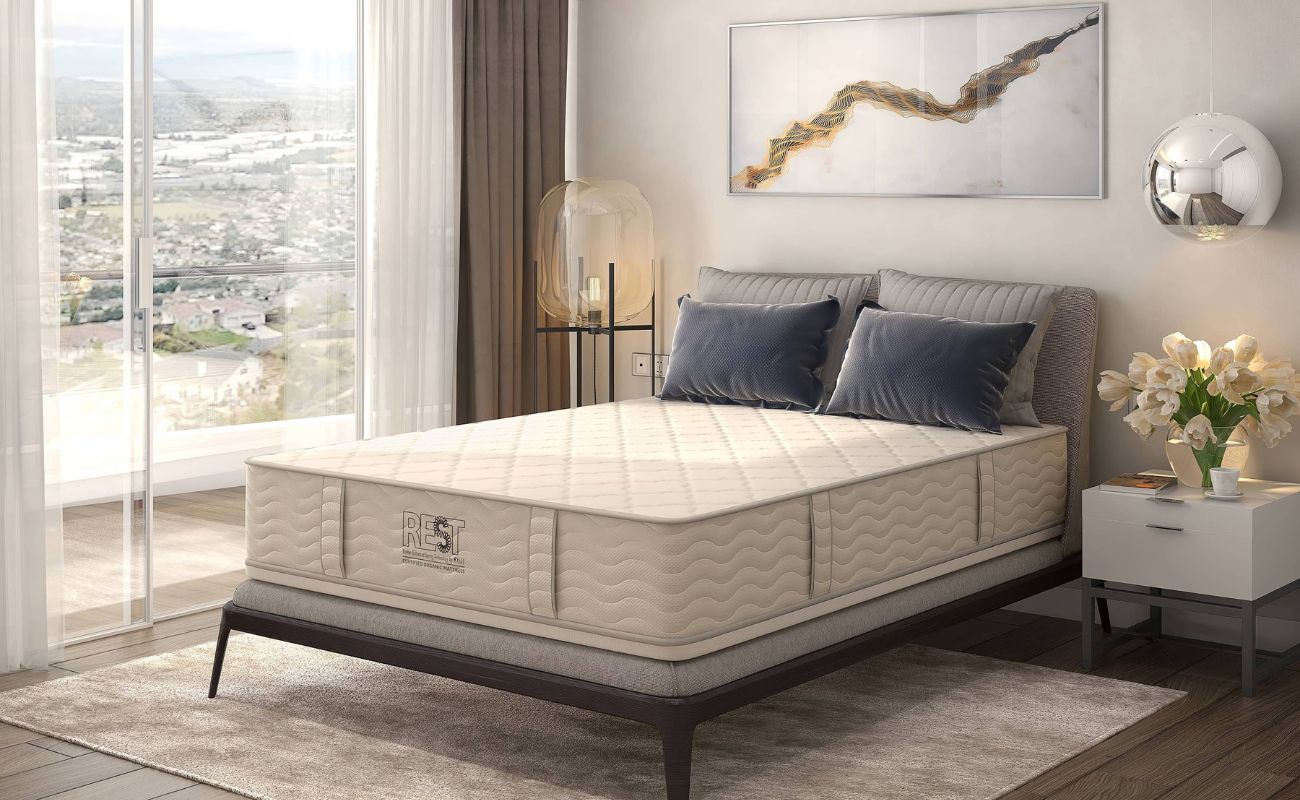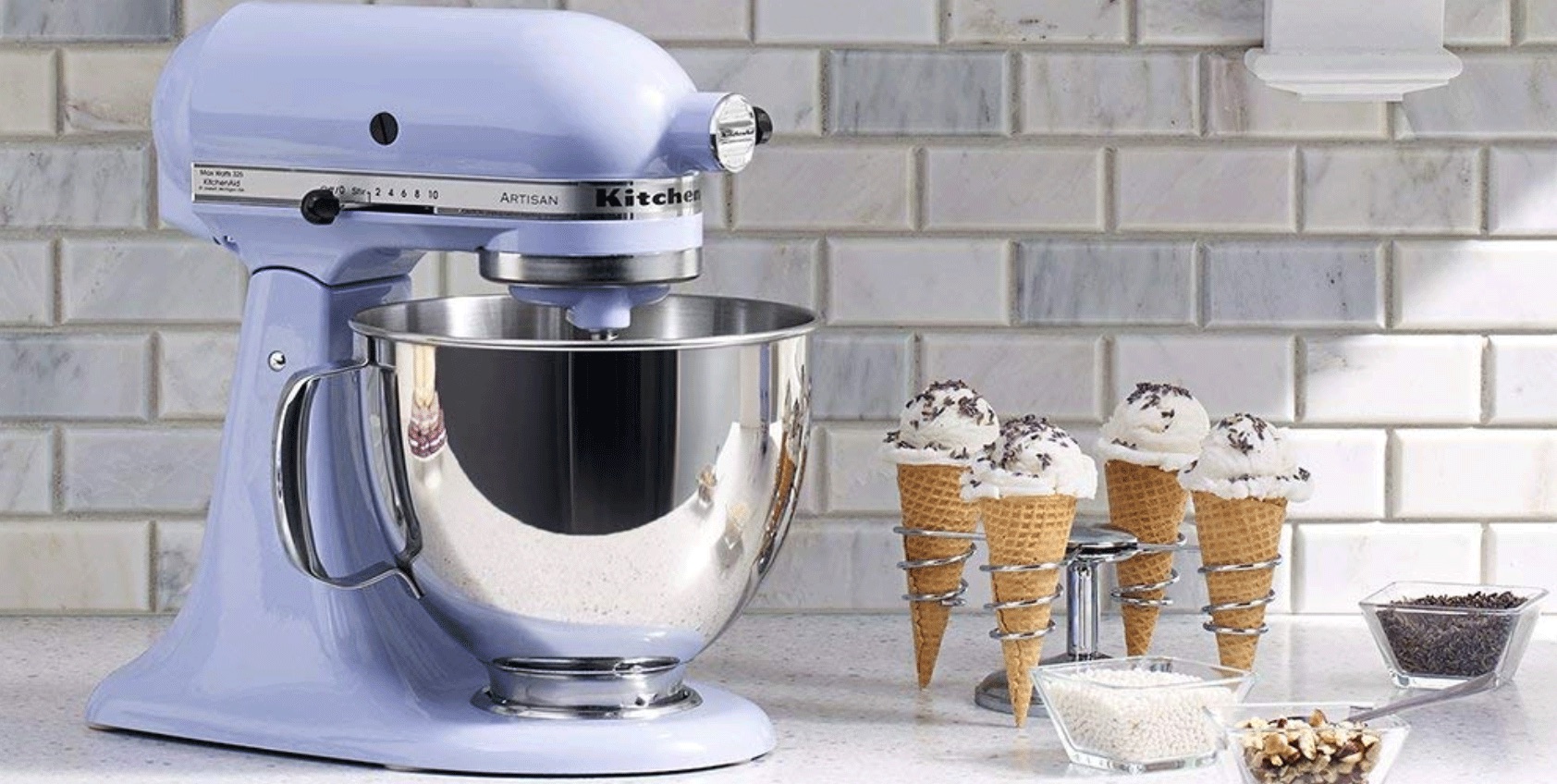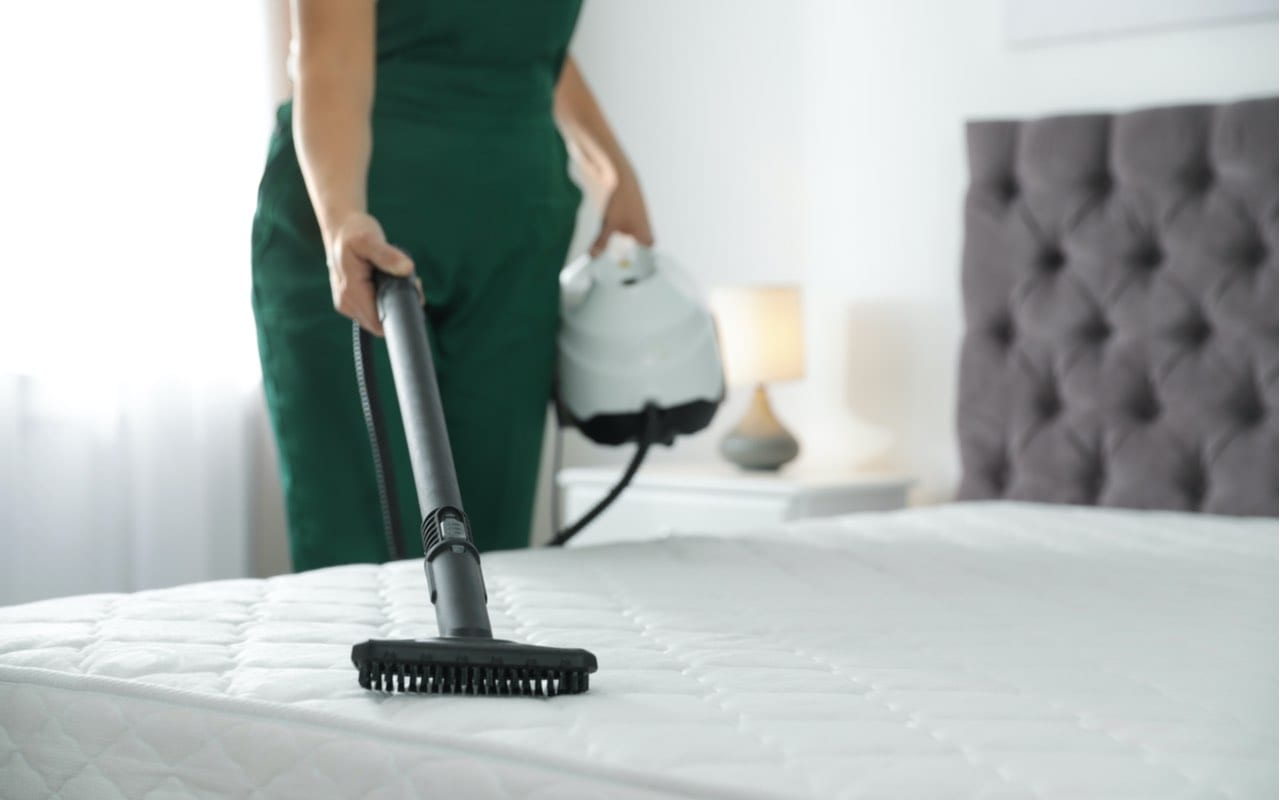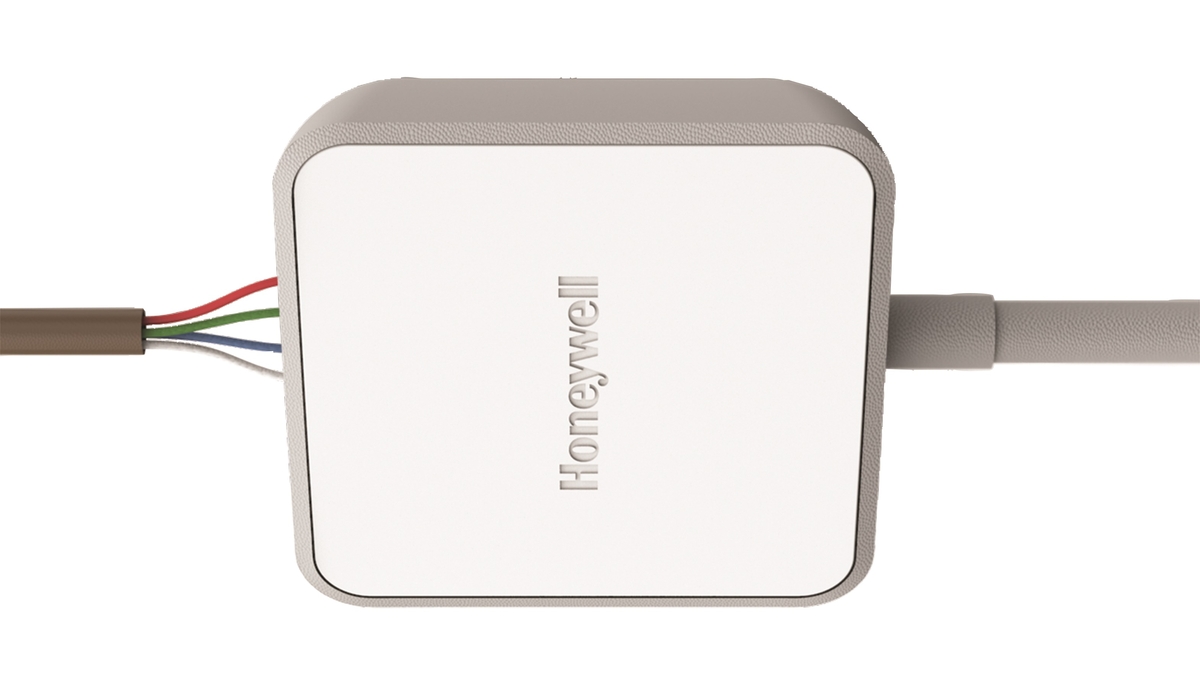Home>Furniture>Bedroom Furniture>How Do I Know Which Mattress Is Right For Me
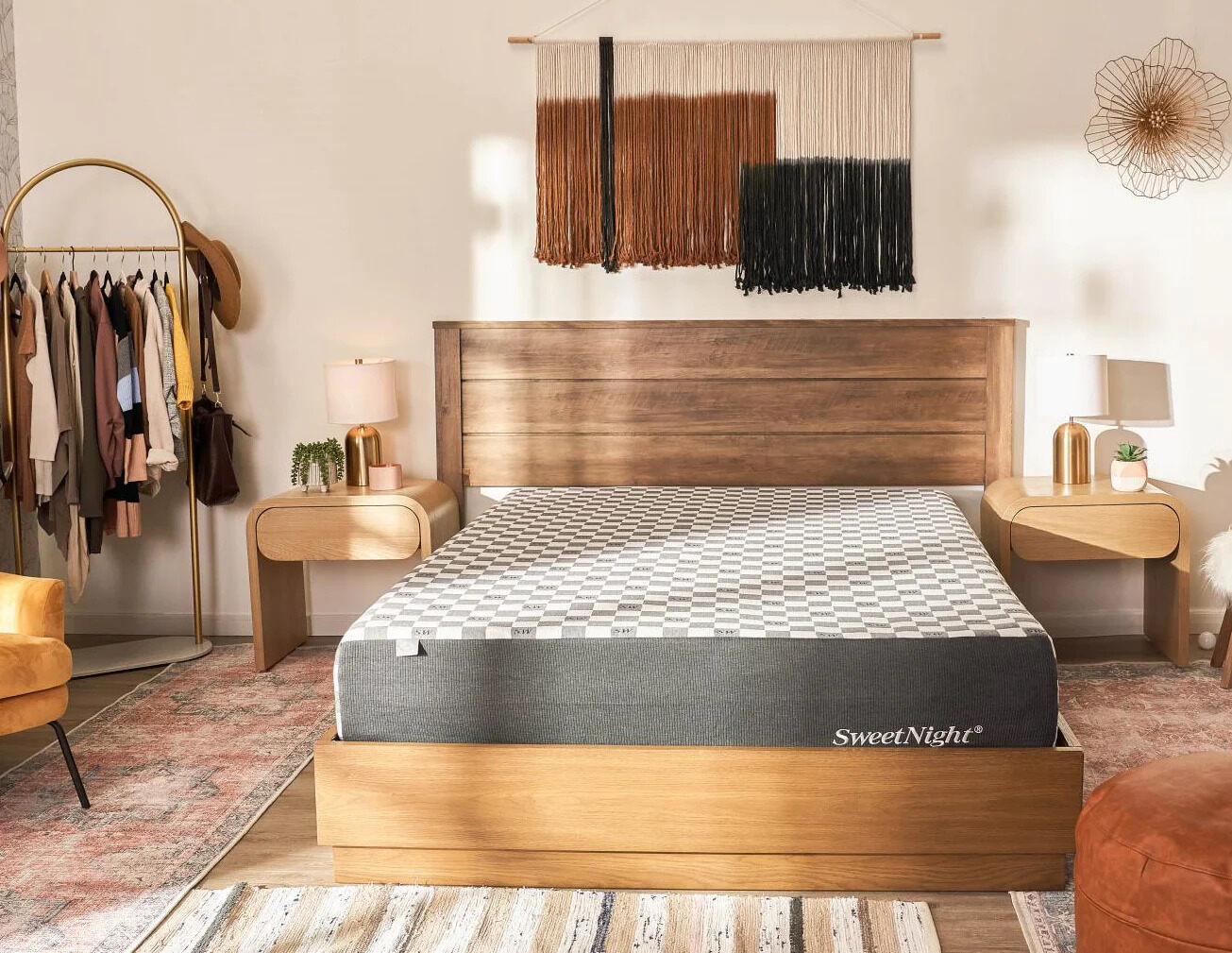

Bedroom Furniture
How Do I Know Which Mattress Is Right For Me
Modified: August 28, 2024
Looking for the perfect mattress for your bedroom? Find out how to choose the right one for your needs with our expert guide on bedroom furniture.
(Many of the links in this article redirect to a specific reviewed product. Your purchase of these products through affiliate links helps to generate commission for Storables.com, at no extra cost. Learn more)
Introduction
When it comes to creating your perfect bedroom oasis, one of the most crucial elements to consider is the mattress you choose. A good mattress can make a significant difference in your sleep quality, overall comfort, and even your health. With so many options available on the market today, selecting the right mattress for your needs can be overwhelming. But fear not! In this article, we will guide you through the process of choosing the perfect mattress.
As you embark on your mattress-buying journey, there are several factors to consider that can help you narrow down your options. These factors include your preferred sleeping position, the level of firmness and support you desire, the materials used in the mattress, temperature regulation and breathability, motion isolation and responsiveness, durability, space constraints, and your budget.
By understanding these key considerations and how they relate to your unique preferences and requirements, you can make an informed decision and find the mattress that will provide you with the ultimate comfort and support for a peaceful night’s sleep.
Key Takeaways:
- Choose the right mattress by considering your sleeping position, firmness level, materials, allergies, and budget. Prioritize comfort, support, and long-term value for a restful night’s sleep.
- Test different mattress types and sizes to find the perfect fit for your sleeping position and bedroom space. Balance quality, durability, and budget for a well-informed investment in your sleep quality.
Read more: Which Lawnmower Is Right For Me
Factors to Consider when Choosing a Mattress
Choosing the right mattress is a personal decision that depends on various factors. To make the best choice, consider the following:
- Sleeping Positions: Your preferred sleeping position plays a crucial role in determining the type of mattress that will provide optimal support and comfort. For example, if you sleep on your side, a mattress with pressure-relieving properties, such as memory foam or a hybrid mattress, may be your best bet. Back sleepers typically benefit from a mattress that offers a balance of support and cushioning, such as a medium-firm memory foam mattress or an innerspring mattress with a pillow-top layer. Stomach sleepers generally require a firmer mattress to keep their spine aligned.
- Firmness Level and Support: The level of mattress firmness you choose depends on your personal preference and body type. Firmness levels typically range from soft to firm. Keep in mind that mattress firmness is not the same as support. A supportive mattress provides proper spinal alignment and prevents the sinking feeling often associated with a mattress that is too soft.
- Mattress Materials: There are various mattress materials available, each offering different benefits. Memory foam provides contouring and pressure relief. Latex mattresses offer buoyant support and are naturally cooling. Innerspring mattresses are known for their bounciness and breathability. Hybrid mattresses combine two or more materials to provide a blend of support, comfort, and durability.
- Allergies and Sensitivities: If you have allergies or sensitivities, it’s important to choose a mattress that is hypoallergenic and resistant to dust mites, mold, and mildew. Look for mattresses made from materials like latex or those with CertiPUR-US® or OEKO-TEX® certifications, indicating they are free from harmful chemicals and allergens.
- Temperature Regulation: If you tend to sleep hot, consider a mattress with cooling properties. Look for features such as gel-infused memory foam, breathable materials like latex or hybrid constructions with airflow channels.
- Motion Isolation: If you share your bed with a partner, consider a mattress with excellent motion isolation properties. Memory foam and latex mattresses are known for their ability to absorb motion, preventing disturbances from your partner’s movements during the night.
- Durability: A good mattress is a long-term investment. Look for mattresses with high-quality materials and strong construction to ensure they will last for years without losing their shape and support.
- Mattress Size: Consider the size of your bedroom and your individual sleeping space needs. Common mattress sizes include Twin, Twin XL, Full, Queen, King, and California King. Choose a size that allows for enough space to stretch comfortably.
- Price Range: Determine your budget before starting your mattress shopping. Keep in mind that a higher price doesn’t always indicate the best quality. Look for value and consider factors such as warranty, return policy, and customer reviews.
By taking these factors into account, you’ll be equipped to make an informed decision that best suits your needs and preferences. Remember, finding the right mattress is essential for a good night’s sleep and overall well-being.
Sleeping Positions and Mattress Types
Your sleeping position is a crucial factor to consider when choosing a mattress. The right mattress type can provide the necessary support and alignment for a comfortable night’s sleep. Here’s a breakdown of the recommended mattress types for different sleeping positions:
- Side sleepers: For those who prefer sleeping on their side, a mattress with pressure relief is essential to alleviate potential discomfort on the shoulders and hips. Memory foam mattresses are an excellent choice as they contour to the body’s curves, reducing pressure points and promoting proper spinal alignment. Hybrid mattresses that combine memory foam and pocketed coils can also offer the necessary support and cushioning for side sleepers.
- Back sleepers: Back sleepers benefit from a mattress that strikes a balance between support and comfort. A medium-firm mattress provides adequate support for the spine while offering a plush sleeping surface. Memory foam mattresses with a medium-firm feel or hybrid mattresses with a combination of foam and innerspring systems are ideal for back sleepers.
- Stomach sleepers: Stomach sleepers need a firmer mattress to maintain proper spinal alignment and prevent excessive sinking. A mattress that offers support to the hips and abdomen helps avoid lower back pain. Innerspring or hybrid mattresses with a firmer feel are generally recommended for stomach sleepers.
- Combination sleepers: If you change positions throughout the night, a responsive mattress is essential. Latex mattresses or hybrid mattresses with latex layers provide a responsive and supportive surface that adapts to your movements, ensuring a comfortable sleep regardless of your sleeping position.
It’s important to note that individual preferences may vary within each sleeping position category. So, be sure to test different mattress types and firmness levels to find the one that makes you feel the most comfortable and supported in your preferred sleeping position.
Remember, the goal is to find a mattress that promotes proper spinal alignment, relieves pressure points, and provides a comfortable sleep surface, regardless of your sleeping position.
Firmness Level and Support
When choosing a mattress, the level of firmness and support it provides are crucial factors to consider. The right balance of firmness and support can contribute to a restful and comfortable sleep experience. Here’s what you need to know:
The level of firmness refers to how soft or firm a mattress feels when you lie down on it. Firmness is often rated on a scale from 1 to 10, with 1 being extremely soft and 10 being extremely firm. The ideal firmness level for you depends on your individual preferences and sleeping needs.
To determine the right firmness level, consider the following:
- Sleeping Position: Side sleepers typically benefit from a slightly softer mattress to cushion pressure points on the hips and shoulders. Back sleepers generally find medium-firm to slightly firm mattresses ideal, as they provide a balance of support and pressure relief. Stomach sleepers generally need a firmer mattress to keep the spine properly aligned and prevent sinking.
- Body Weight: Your body weight can affect how a mattress feels to you. Heavier individuals may require a firmer mattress to prevent excessive sinking and maintain proper support, while lighter individuals may find softer mattresses more comfortable.
- Personal Preference: Ultimately, your personal comfort preferences should guide your decision. If you prefer a plush, cloud-like feel, you may opt for a softer mattress. If you prefer a firmer surface with more support, a medium-firm to firm mattress may be more suitable.
While firmness is important, support is equally vital for maintaining proper spinal alignment and reducing pressure points. A supportive mattress helps distribute your body weight evenly and keeps your spine in a neutral position. Look for a mattress that contours to your body’s natural curves and provides adequate support to areas such as your lower back, shoulders, and hips.
Remember, mattress firmness and support requirements are subjective and vary from person to person. It’s essential to test different mattresses and consider your individual needs to find the right firmness level and support that will provide you with a comfortable and restorative sleep experience.
Mattress Materials and Allergies
When choosing a mattress, it’s important to consider the materials used in its construction, especially if you have allergies or sensitivities. Certain mattress materials can offer hypoallergenic properties and resistance to common allergens, allowing you to sleep comfortably and breathe easier. Here are some mattress materials to consider:
- Latex: Latex mattresses are naturally hypoallergenic and resistant to dust mites, mold, and mildew. Latex is inherently resistant to allergens due to its dense composition, making it an excellent choice for allergy sufferers. Natural latex mattresses, made from the sap of the rubber tree, are a popular option.
- Memory Foam: High-quality memory foam mattresses are constructed using CertiPUR-US® certified foams, which are free from harmful chemicals and allergens. Memory foam mattresses are renowned for their ability to isolate motion, contour to the body, and relieve pressure points. However, some individuals may be sensitive to the odor that memory foam emits when it is first unpacked, known as off-gassing. This odor dissipates over time.
- Innerspring: Traditional innerspring mattresses consist of a steel coil support system topped with layers of cushioning materials, such as foam or fiber. Innerspring mattresses provide good airflow and breathability, reducing the risk of allergen accumulation. However, it’s important to note that dust mites can potentially accumulate in the padding and fabric above the springs.
- Hybrid: Hybrid mattresses combine the benefits of different materials, such as memory foam, latex, and innerspring systems. When selecting a hybrid mattress, look for hypoallergenic materials and certifications to ensure it meets your allergy needs.
Consider your specific allergies or sensitivities when choosing a mattress, and opt for materials that are resistant to allergens. Look for certifications such as CertiPUR-US® or OEKO-TEX® to ensure that the mattress meets specific health and environmental standards.
Additionally, it’s important to keep your mattress clean and well-maintained to minimize allergen accumulation. Regularly vacuuming, using mattress protectors, and following the manufacturer’s cleaning instructions can help create a healthier sleeping environment.
By choosing a mattress made from hypoallergenic materials and taking proper care of it, you can minimize the presence of allergens and create a sleep environment that promotes better health and well-being.
Read more: How Do I Know Which Alexa I Have
Temperature Regulation and Breathability
Temperature regulation and breathability are important considerations when choosing a mattress, especially if you tend to sleep hot or live in a warmer climate. Heat and moisture buildup can disrupt your sleep and leave you feeling uncomfortable throughout the night. Here’s what you need to know about temperature regulation and breathability in mattresses:
1. Materials: Different mattress materials have varying levels of breathability. For example:
- Latex: Natural latex mattresses have an open-cell structure that promotes airflow. Latex is naturally breathable, allowing heat to dissipate and preventing the buildup of moisture.
- Innerspring: Innerspring mattresses have a coil support system that allows for good airflow. The space between the coils promotes ventilation, keeping you cool and comfortable throughout the night.
- Hybrid: Hybrid mattresses, which combine materials like memory foam or latex with innerspring systems, can offer a balance of comfort and breathability. The coil support layer allows for airflow, while the comfort layers provide pressure relief and contouring.
- Memory Foam: Traditional memory foam mattresses can retain body heat, leading to a warmer sleep experience. However, advancements in memory foam technology have led to the development of gel-infused memory foam and open-cell foams that promote better airflow and heat dissipation.
2. Cooling Technologies: Some mattresses incorporate specific cooling technologies to help regulate temperature. These may include:
- Gel-Infused Foam: Gel-infused memory foam is designed to absorb and disperse body heat, helping to keep you cool and comfortable.
- Phase-Change Materials: Some mattresses feature phase-change materials that absorb excess heat and release it when your body temperature drops, promoting a more consistent sleep temperature.
- Airflow Enhancements: Mattresses with airflow-enhancing features, such as air channels or perforated layers, allow for improved ventilation and breathability, helping to regulate temperature.
3. Breathable Covers: The mattress cover or fabric can also play a role in temperature regulation. Look for breathable, moisture-wicking covers that promote airflow and prevent excessive heat buildup.
Remember, everyone has different temperature preferences. If you tend to sleep hot or live in a warmer climate, prioritize mattresses with excellent breathability and cooling features. Testing different materials and technologies can help you find the right mattress that keeps you comfortably cool throughout the night.
When choosing a mattress, consider your sleeping position, firmness preference, and any specific health concerns. Try out different types in-store and research online reviews to find the best fit for your needs.
Motion Isolation and Responsiveness
If you share your bed with a partner or pet, motion isolation and responsiveness are key factors to consider when choosing a mattress. Motion isolation refers to the mattress’s ability to absorb and minimize motion transfer, while responsiveness refers to how quickly the mattress adjusts to changes in pressure. Here’s what you need to know:
Motion Isolation:
For couples or individuals who are sensitive to movement during sleep, a mattress with good motion isolation is essential. Memory foam and latex mattresses are often praised for their superior motion isolation properties. These materials absorb and dissipate movement, preventing disruptions from your partner’s movements throughout the night. Hybrid mattresses can also offer decent motion isolation, especially those with individually wrapped coils that individually respond to pressure.
Responsiveness:
Responsiveness refers to how quickly a mattress adjusts to changes in pressure and provides support to the body. A responsive mattress allows for ease of movement and prevents you from feeling “stuck” in the mattress. Latex mattresses are known for their quick responsiveness due to the natural bounce and buoyancy of the material. Hybrid mattresses with latex layers or individually wrapped coils also provide good responsiveness, allowing for easier movement and repositioning during sleep.
When considering motion isolation and responsiveness, it’s important to find the right balance. While you want a mattress that minimizes partner disturbance, you also want one that responds to your movements for optimal comfort and support.
If motion isolation is a priority, opt for a memory foam or latex mattress. Look for models with thicker comfort layers to enhance motion dampening. If responsiveness is important to you, consider a latex or hybrid mattress that combines responsive materials with motion isolation properties.
Ultimately, testing different mattresses and experiencing their motion isolation and responsiveness firsthand can help you find the perfect balance that suits your needs and sleeping preferences.
Durability and Longevity
When investing in a new mattress, it’s important to consider factors that contribute to its durability and longevity. A mattress is a long-term investment, and choosing a durable option ensures that you’ll enjoy its comfort and support for years to come. Here’s what you need to know:
Construction and Materials:
The construction and materials used in a mattress play a significant role in its durability. High-quality mattresses often feature strong support cores, durable comfort layers, and sturdy edge support. Look for mattresses made with robust materials such as high-density memory foam, natural latex, or coils made from durable steel. These materials are designed to withstand the wear and tear associated with regular use.
Warranty and Certifications:
Check the mattress manufacturer’s warranty to understand the level of protection and guarantee offered. A lengthy warranty period can indicate the manufacturer’s confidence in their product’s durability. Additionally, certifications such as CertiPUR-US® or OEKO-TEX® ensure that the mattress is made from materials free of harmful substances and meet certain quality standards.
Customer Reviews:
Reading customer reviews can provide valuable insights into a mattress’s durability and longevity. Look for reviews that mention the lifespan of the mattress, how well it has held up over time, and any issues encountered. However, keep in mind that individual experiences may vary, and factors such as care and usage can affect a mattress’s longevity.
Care and Maintenance:
Proper care and maintenance can significantly impact a mattress’s lifespan. Follow the manufacturer’s guidelines for rotating, flipping, or rotating your mattress to ensure even wear. Consider using a mattress protector to prevent spills, stains, and allergen accumulation. Regularly vacuum your mattress to remove dust and debris that can deteriorate its materials over time.
Weight Distribution:
Individuals with heavier body weights may place more stress on a mattress, potentially impacting its longevity. If you fall into this category, look for mattresses designed to support higher weight capacities or consider a hybrid mattress with durable coils and dense foam or latex comfort layers.
Remember, the overall durability and lifespan of a mattress can vary depending on various factors, including usage, maintenance, and individual body weight. By selecting a mattress with solid construction, warranties, and positive reviews, and properly caring for it, you can ensure that your investment will serve you well for years to come.
Mattress Size and Bedroom Space
When choosing a mattress, it’s important to consider the size that will best fit your bedroom space. The right mattress size not only provides comfort but also ensures that your bedroom remains functional and spacious. Here are some factors to consider:
Room Dimensions:
Measure your bedroom dimensions to determine the available space for your mattress. Consider other furniture, such as nightstands, dressers, and any additional items you may have in the room. Ensure that you have enough space to move around comfortably and that the mattress size won’t overwhelm the room.
Mattress Sizes:
Common mattress sizes include Twin, Twin XL, Full, Queen, King, and California King. Here’s a breakdown of each size:
- Twin: Ideal for children, teens, or single sleepers with limited bedroom space. It measures approximately 38 inches wide by 75 inches long.
- Twin XL: Slightly longer than a Twin, it provides extra legroom and is popular in college dormitories. It measures approximately 38 inches wide by 80 inches long.
- Full: Also known as a Double, it offers more width for single sleepers and is suitable for couples who want to maximize their bedroom space. It measures approximately 54 inches wide by 75 inches long.
- Queen: A versatile size that accommodates most couples comfortably. It measures approximately 60 inches wide by 80 inches long and is recommended for larger bedrooms.
- King: Offers ample space for couples who prefer extra room or share the bed with children or pets. It measures approximately 76 inches wide by 80 inches long.
- California King: The longest standard mattress size, ideal for taller individuals. It provides extra length but is slightly narrower than a King. It measures approximately 72 inches wide by 84 inches long.
Personal Preference:
Consider your sleeping habits and preference for space. If you tend to move around or sleep with a partner, a larger mattress size may be more suitable for a comfortable sleep experience. Additionally, if you have a larger bedroom, you may have more freedom to choose a larger mattress size.
It’s important to strike a balance between mattress size and bedroom space. Remember to consider both your comfort needs and the practicality of the mattress size to ensure that your bedroom remains functional and inviting.
Read more: How Do I Know When I Need A New Mattress
Price Range and Budget
When searching for the perfect mattress, it’s essential to determine your price range and establish a budget. Mattress prices can vary widely, so understanding your budget constraints will help you find a quality mattress that meets your needs without breaking the bank. Here are some factors to consider:
Quality vs. Price:
While it’s tempting to opt for the cheapest mattress available, it’s important to consider the quality and durability of the mattress. A well-constructed mattress made from high-quality materials will provide better support, comfort, and longevity, ensuring a good night’s sleep for years to come. Balancing your budget with the quality of the mattress is crucial for making a wise investment.
Research and Comparison:
Take the time to research and compare different mattress options within your price range. Look for sales, promotions, or discounts that may be available. Online mattress retailers often offer more affordable options compared to brick-and-mortar stores due to reduced overhead costs. However, it’s still recommended to test the mattress in-person before purchasing or take advantage of trial periods offered by online retailers.
Consider Long-Term Value:
While it may be tempting to choose the cheapest mattress available, consider the long-term value and the potential cost of replacing a low-quality mattress more frequently. Investing in a slightly higher-priced mattress that offers better durability and comfort can save you money in the long run.
Warranties and Return Policies:
Check the warranty and return policy of the mattress you are considering. A good warranty will provide protection against manufacturing defects and premature wear. Additionally, a generous return policy allows you to try the mattress in your own home, ensuring that it is the right fit for you before committing to a long-term purchase.
Customer Reviews:
Read customer reviews and feedback to gain insights into the value and durability of the mattresses you are considering. Real experiences from other customers can help you make an informed decision that aligns with your budget and priorities.
Financing Options:
If you have a strict budget but need a higher-priced mattress, consider financing options offered by retailers. Many retailers provide financing plans with low or zero-interest options, allowing you to spread the cost of the mattress over time without straining your budget.
Remember that finding the right mattress is an investment in your sleep quality and overall well-being. With careful consideration of your budget and diligent research, you can find a mattress that offers the perfect balance of affordability and quality.
Conclusion
Choosing the right mattress for your bedroom is a decision that should not be taken lightly. Your mattress plays a significant role in your sleep quality, comfort, and overall well-being. By considering the factors discussed in this article, you can make an informed decision that suits your individual needs and preferences.
Factors such as your preferred sleeping position, the level of firmness and support you desire, the materials used in the mattress, temperature regulation and breathability, motion isolation and responsiveness, durability and longevity, mattress size and bedroom space, as well as your budget, all play a crucial role in selecting the perfect mattress.
By taking the time to research different mattress options, both online and in-store, and testing them for comfort and support, you can find a mattress that aligns with your specific requirements. Reading customer reviews, considering warranties and return policies, and understanding financing options can further assist you in making an informed choice.
Remember, quality and durability are key considerations. Balancing your budget with the long-term value of the mattress ensures that you are investing in a product that will provide you with a comfortable and restorative sleep experience for years to come.
So, take your time, explore your options, and prioritize your comfort and sleep needs. Investing in the right mattress is an investment in your health and well-being, ensuring that you wake up refreshed, rejuvenated, and ready to tackle the day ahead.
Frequently Asked Questions about How Do I Know Which Mattress Is Right For Me
Was this page helpful?
At Storables.com, we guarantee accurate and reliable information. Our content, validated by Expert Board Contributors, is crafted following stringent Editorial Policies. We're committed to providing you with well-researched, expert-backed insights for all your informational needs.
